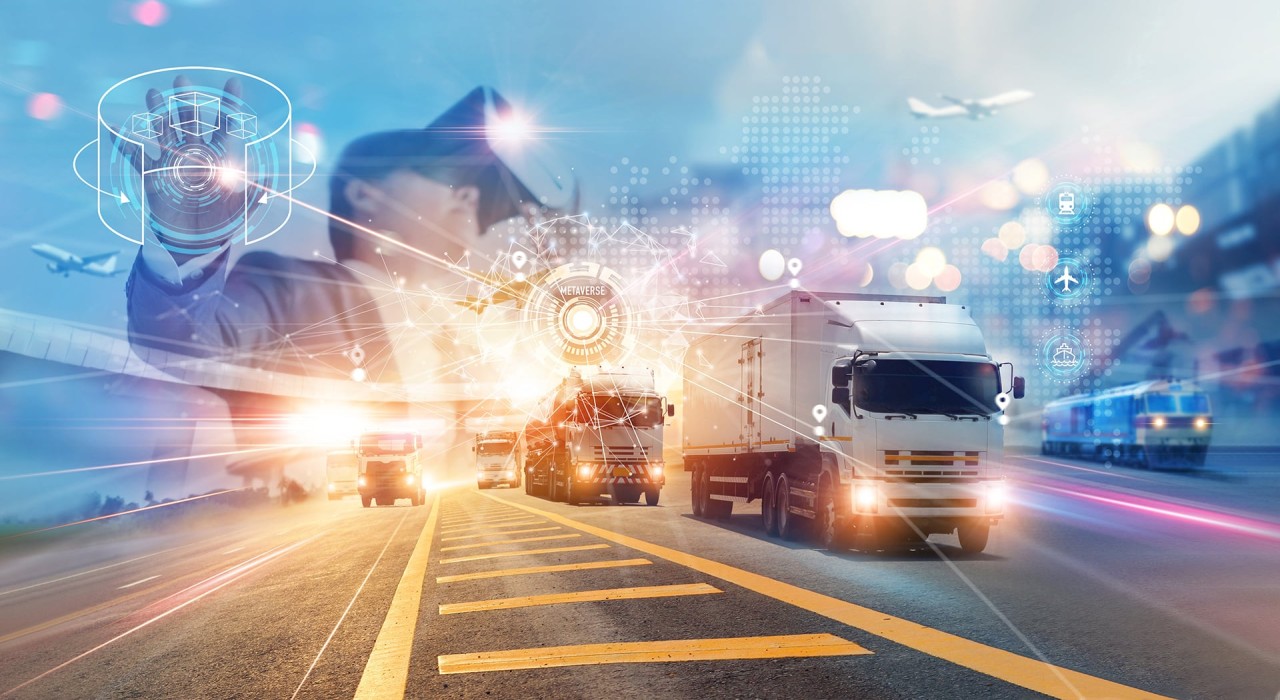The digital revolution has transformed virtually every aspect of modern life, from the way we communicate to how we shop, work, and interact with technology. While many industries have embraced digital tools and platforms, traditional industries—such as manufacturing, agriculture, and construction—have faced significant challenges in adapting to the rapidly changing landscape. However, digital transformation is no longer a luxury but a necessity for these industries to remain competitive, efficient, and sustainable in the long term.
In this article, we explore the strategies that traditional industries can adopt to effectively navigate the digital revolution and ensure their continued growth and success.
Understanding the Digital Revolution
Before delving into specific strategies, it’s important to understand what the digital revolution entails. The term “digital revolution” refers to the rapid shift from traditional analog technologies to digital systems, largely driven by the rise of the internet, automation, artificial intelligence (AI), cloud computing, and big data. These technologies have fundamentally altered how businesses operate, creating new opportunities and challenges across various sectors.
For traditional industries, the digital revolution means embracing new technologies and processes to improve efficiency, reduce costs, enhance customer experiences, and drive innovation. The digital age is characterized by continuous innovation, and industries that fail to keep up risk being left behind.
Embracing Automation and Artificial Intelligence (AI)
Streamlining Operations with Automation
One of the most significant advancements of the digital revolution is automation. Automation involves using machines and software to perform tasks that were once done manually, thereby improving efficiency, reducing human error, and lowering operational costs.
For traditional industries such as manufacturing, agriculture, and logistics, automation can take many forms. For example, robotics can handle repetitive tasks in factories, such as assembling parts or packaging products, while automated machinery can streamline processes in agriculture, such as planting, harvesting, and monitoring crop health.
By adopting automation, traditional industries can:
- Increase production speeds
- Reduce labor costs
- Improve product quality and consistency
- Minimize waste and inefficiencies
Leveraging Artificial Intelligence
Another way traditional industries can adapt to the digital revolution is by integrating artificial intelligence (AI) into their operations. AI can analyze vast amounts of data to make informed decisions, optimize processes, and predict future trends. For example, AI-powered predictive maintenance tools can monitor machines and equipment, detecting potential issues before they lead to costly breakdowns.
In manufacturing, AI can help streamline supply chains by predicting demand, optimizing inventory, and minimizing delays. In agriculture, AI-powered systems can analyze soil conditions, weather patterns, and crop health to recommend optimal planting strategies and reduce resource usage. By leveraging AI, industries can achieve greater productivity, better decision-making, and enhanced innovation.
Digitalizing the Customer Experience
Enhancing Customer Interaction with Digital Tools
In the digital age, customer experience is everything. Traditional industries must adapt by embracing digital tools that allow them to better connect with and serve their customers. This could mean implementing e-commerce platforms, mobile apps, and digital customer service channels such as live chat, social media, or AI-driven chatbots.
For example, in the construction industry, companies can use digital platforms to provide real-time updates on projects, allowing clients to track progress, make changes to designs, and communicate directly with contractors. Similarly, retailers can integrate digital solutions like click-and-collect services, virtual stores, or personalized recommendations based on customer data to enhance the shopping experience.
By incorporating digital tools to improve customer interaction, traditional industries can:
- Offer more personalized services
- Improve customer satisfaction and loyalty
- Reach new markets
- Collect valuable feedback to improve products and services
Data-Driven Decision Making
One of the key benefits of digital tools is the ability to collect and analyze large amounts of data. Traditional industries can take advantage of this data to make more informed decisions. For example, data analytics can help manufacturing companies identify inefficiencies in their supply chain, optimize production schedules, and reduce operational costs.
In agriculture, data gathered from sensors, drones, and satellites can be analyzed to improve crop yields, monitor soil health, and predict future weather patterns. By embracing data-driven decision-making, traditional industries can enhance their competitiveness and responsiveness in an increasingly fast-paced market.
Innovating with the Internet of Things (IoT)
Connecting Devices for Real-Time Monitoring
Another key element of the digital revolution is the Internet of Things (IoT), which refers to the network of physical devices that are connected to the internet, allowing them to communicate and share data. Traditional industries can leverage IoT to improve operational efficiency, monitor assets in real-time, and automate processes.
In manufacturing, IoT sensors can monitor machinery performance, track production lines, and detect problems before they lead to downtime. In logistics, IoT-enabled devices can track the movement of goods, improve inventory management, and optimize delivery routes.
The ability to collect real-time data on equipment, inventory, and products allows traditional industries to enhance decision-making, improve supply chain visibility, and reduce costs. IoT can also help industries maintain better control over their operations and adapt quickly to changing conditions.
Smart Infrastructure and Predictive Maintenance
The IoT also plays a significant role in predictive maintenance. By connecting machinery and equipment to the internet, traditional industries can monitor the health of their assets in real time. This allows for predictive maintenance, which involves identifying potential issues before they result in costly downtime or repairs.
In industries like construction or mining, IoT sensors can detect wear and tear on machinery and provide early warnings, enabling timely repairs. This helps companies avoid unexpected breakdowns and ensures that their operations remain efficient and cost-effective.
Overcoming Workforce Challenges
Upskilling and Reskilling Employees
One of the biggest obstacles traditional industries face when adapting to the digital revolution is the workforce. Employees in sectors such as manufacturing, agriculture, and logistics may lack the digital skills required to operate new technologies. For these industries to remain competitive, it’s crucial to invest in upskilling and reskilling employees.
Training programs that focus on digital literacy, automation, and AI will be essential in helping the workforce transition into a more technologically advanced role. Employees will need to learn how to interact with digital tools, operate automated machinery, and analyze data to make data-driven decisions.
By investing in workforce development, traditional industries can:
- Improve employee productivity
- Foster innovation within the organization
- Retain talent in a competitive labor market
Attracting Young Talent
As the digital revolution progresses, attracting and retaining younger, tech-savvy workers will be crucial. Younger generations are more familiar with digital tools and are more likely to be drawn to industries that embrace technology. Traditional industries must adapt their recruitment strategies to appeal to younger talent by offering opportunities for innovation, career development, and digital training.
Companies can also promote the benefits of working in traditional industries, such as job stability, the ability to work on large-scale projects, and the chance to have a tangible impact on the world. By embracing a digital-first culture, traditional industries can appeal to the next generation of workers and ensure a sustainable future.
Embracing Sustainability and Digital Solutions
Green Technologies and Sustainable Practices
The digital revolution offers traditional industries new ways to embrace sustainability. By adopting digital technologies like AI, IoT, and data analytics, industries can monitor resource usage, reduce waste, and optimize their operations to minimize environmental impact.
For example, smart agriculture technologies can help farmers reduce water and pesticide usage, increase crop yields, and decrease environmental harm. Green building technologies in the construction industry can reduce energy consumption and lower carbon emissions.
By integrating sustainable practices into their digital transformation efforts, traditional industries can not only comply with increasing environmental regulations but also reduce costs, appeal to environmentally conscious consumers, and position themselves as leaders in sustainability.
Conclusion
Adapting to the digital revolution presents both challenges and opportunities for traditional industries. By embracing automation, AI, IoT, and data-driven decision-making, these industries can enhance operational efficiency, improve customer experience, and remain competitive in an increasingly digital world. However, adapting to the digital era requires a strategic approach that involves investing in technology, reskilling the workforce, and fostering a culture of innovation.
For traditional industries to successfully navigate the digital revolution, they must recognize the importance of staying agile, continuously learning, and embracing new technologies. Those that successfully make this shift will not only survive but thrive in an era defined by rapid technological change.

